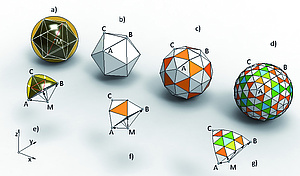
The aim of this research work was to define the content, methods and didactical approaches of the new discipline “Architectural Geometry” and to prepare it for use in architectural programmes offered by technological faculties. A further objective was to analyse the reasons that have led to a decrease in geometric education and which consequences this has had. Based on that evidence, methods were developed to remediate that deficiency in geometry. In addition, analyses were undertaken to find out which geometric basics are crucial for architects with regard to “non-standard architecture” based on new theoretical concepts of “parametricism” and current technical developments. Results of the analysis enable an adequate development of the concept and delineate clearly and distinctly which new requirements prospective architects will have to fulfil in order to do justice to state-of-the-art standards in technology and architectural practice. Additionally, new approaches to functional applications based on fundamental geometric knowledge were found and developed. Architects are constantly in search of new “digital inspirations” in other disciplines and production processes as well as a connection of analogous and digital tools to define aesthetics that will reflect the latest phenomena in “architectural computing”. Due to the rapid development of digital possibilities, architecture students have to learn and master new contents and tools that are relevant for modern architectural design. They need to acquire the ability to use those means adequately instead of being overwhelmed by them.
Project duration:2010 – 2013 Financing:
Austrian Science Fund (FWF) Project management:
M. Stavric, Institute of Architecture and Media, TU Graz
